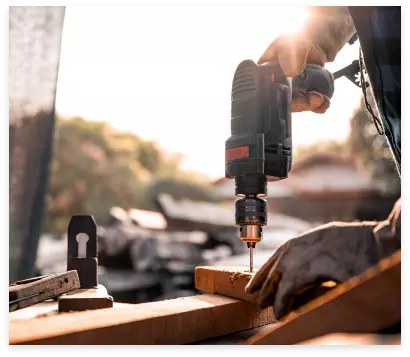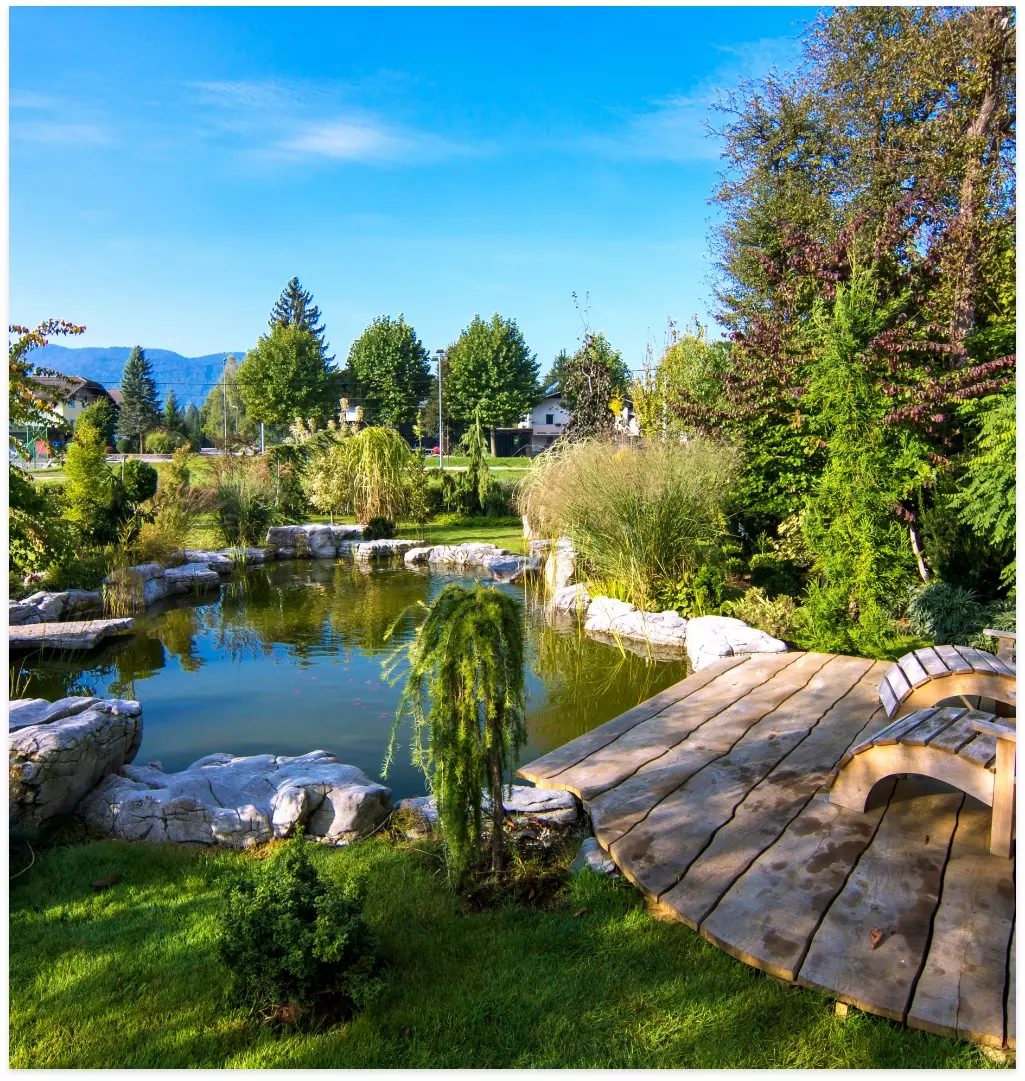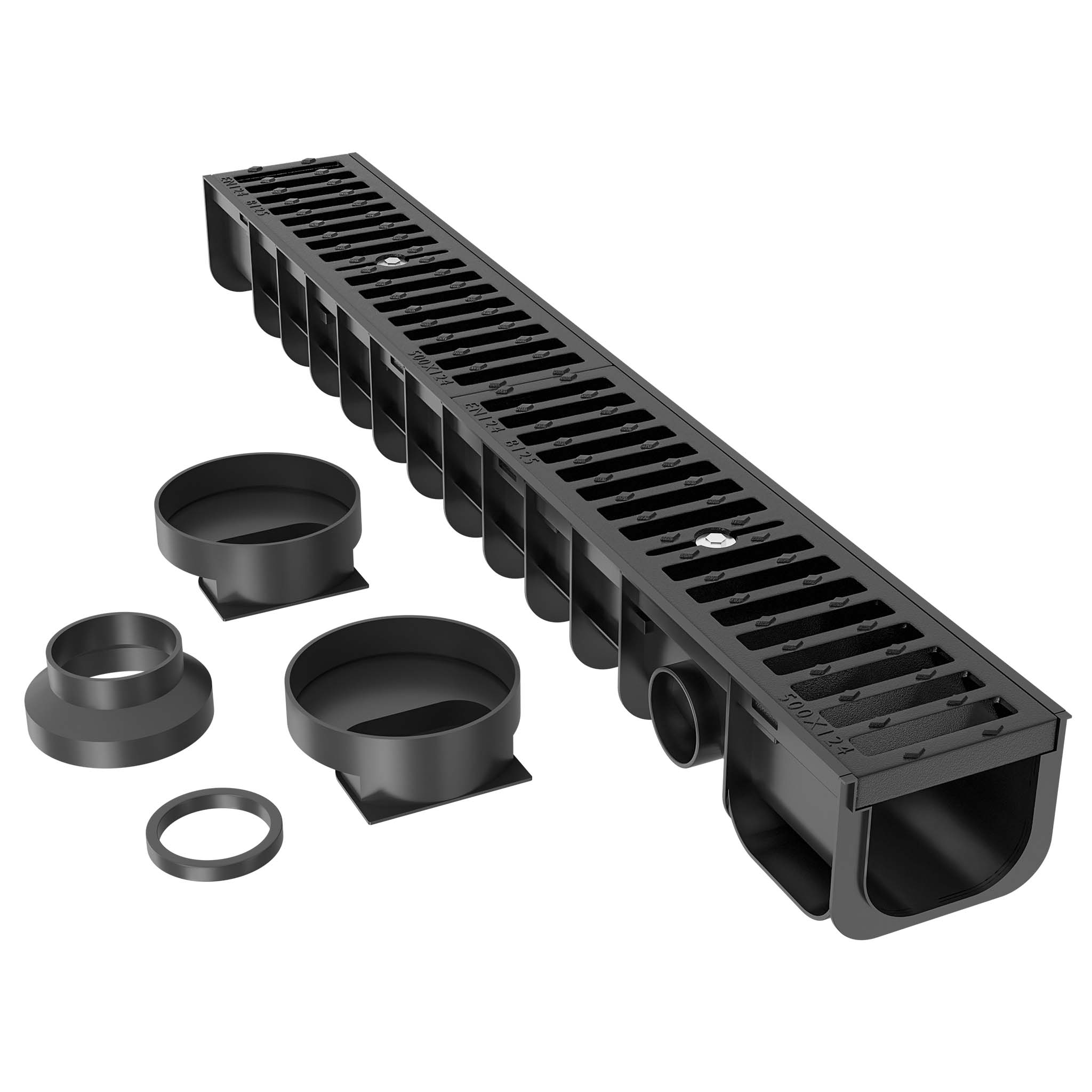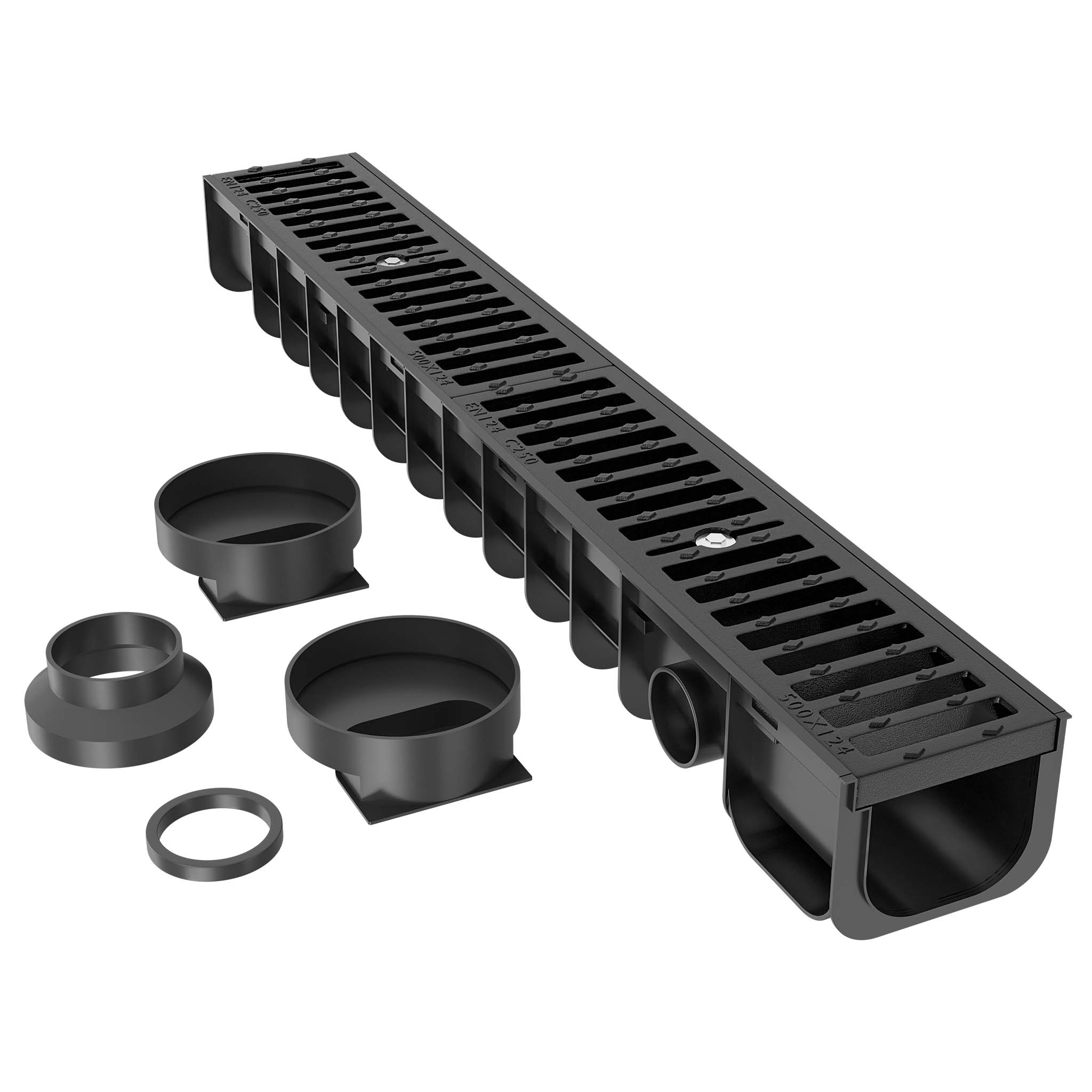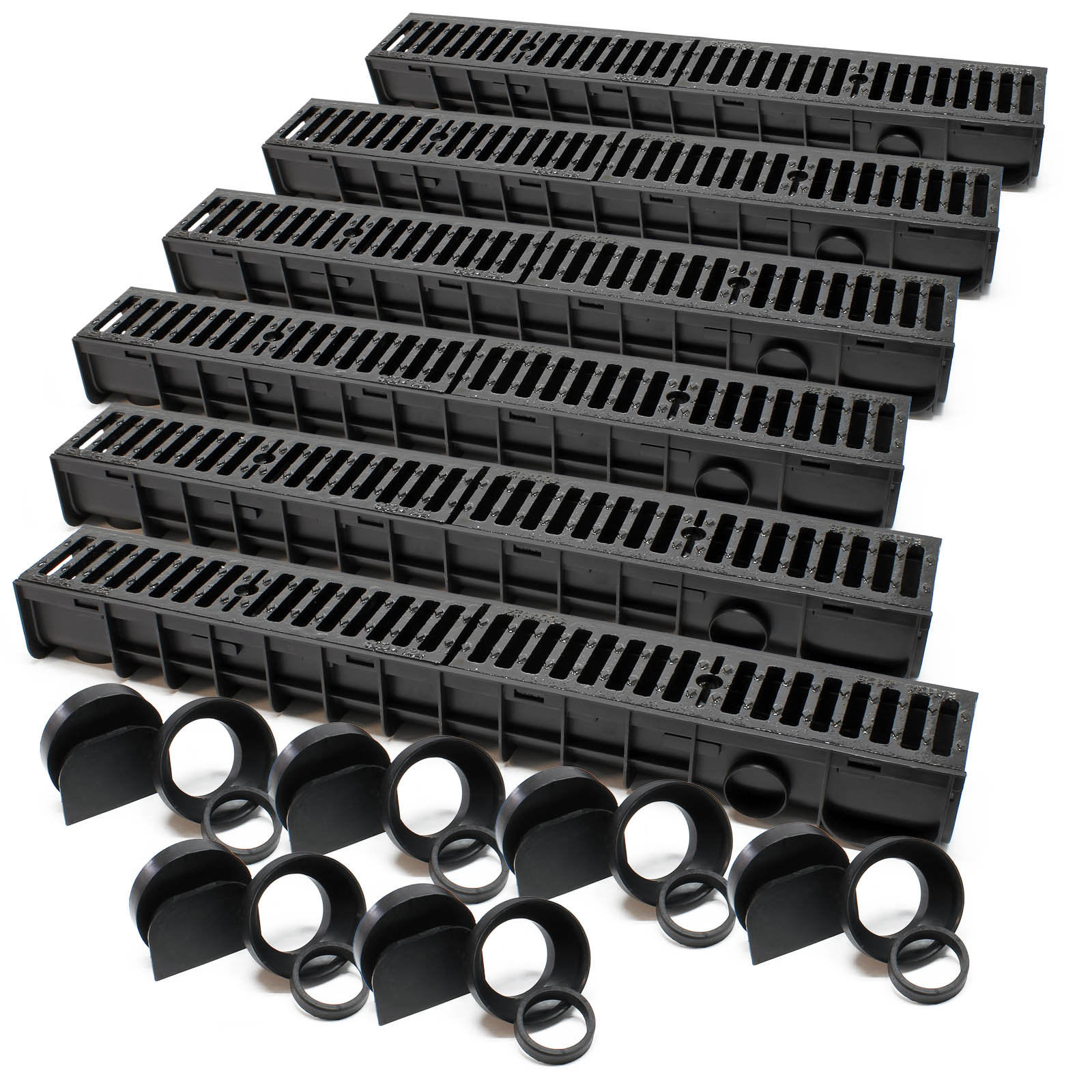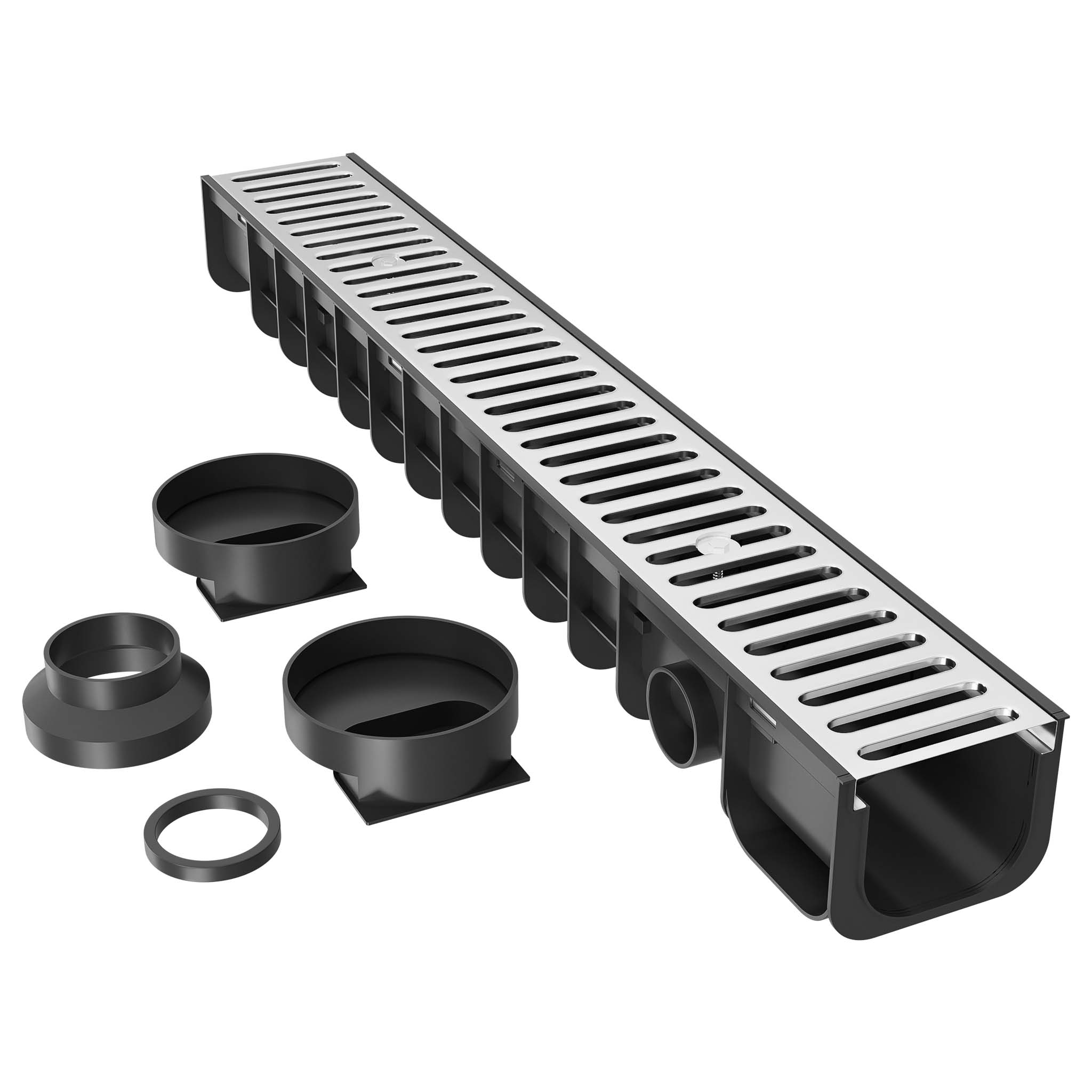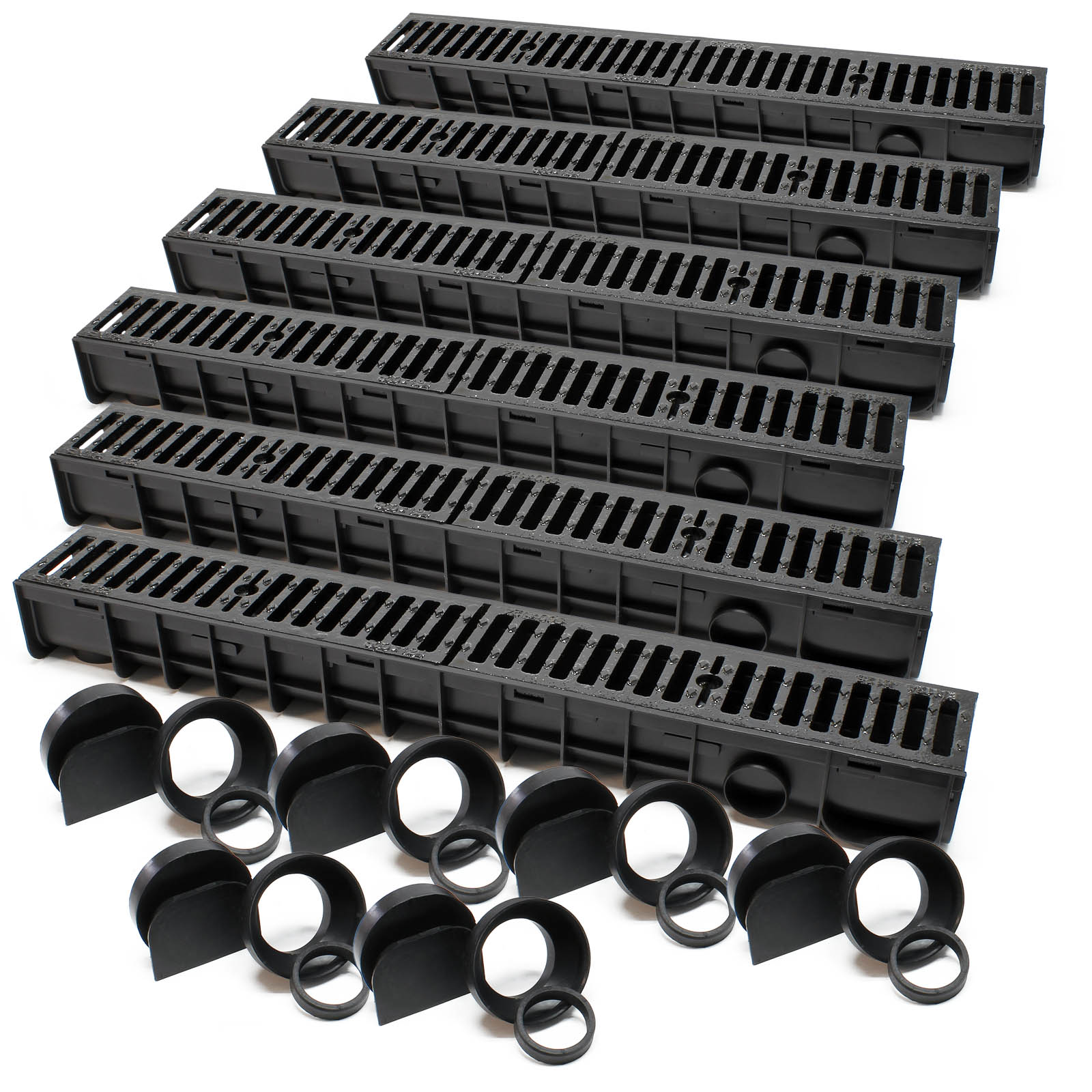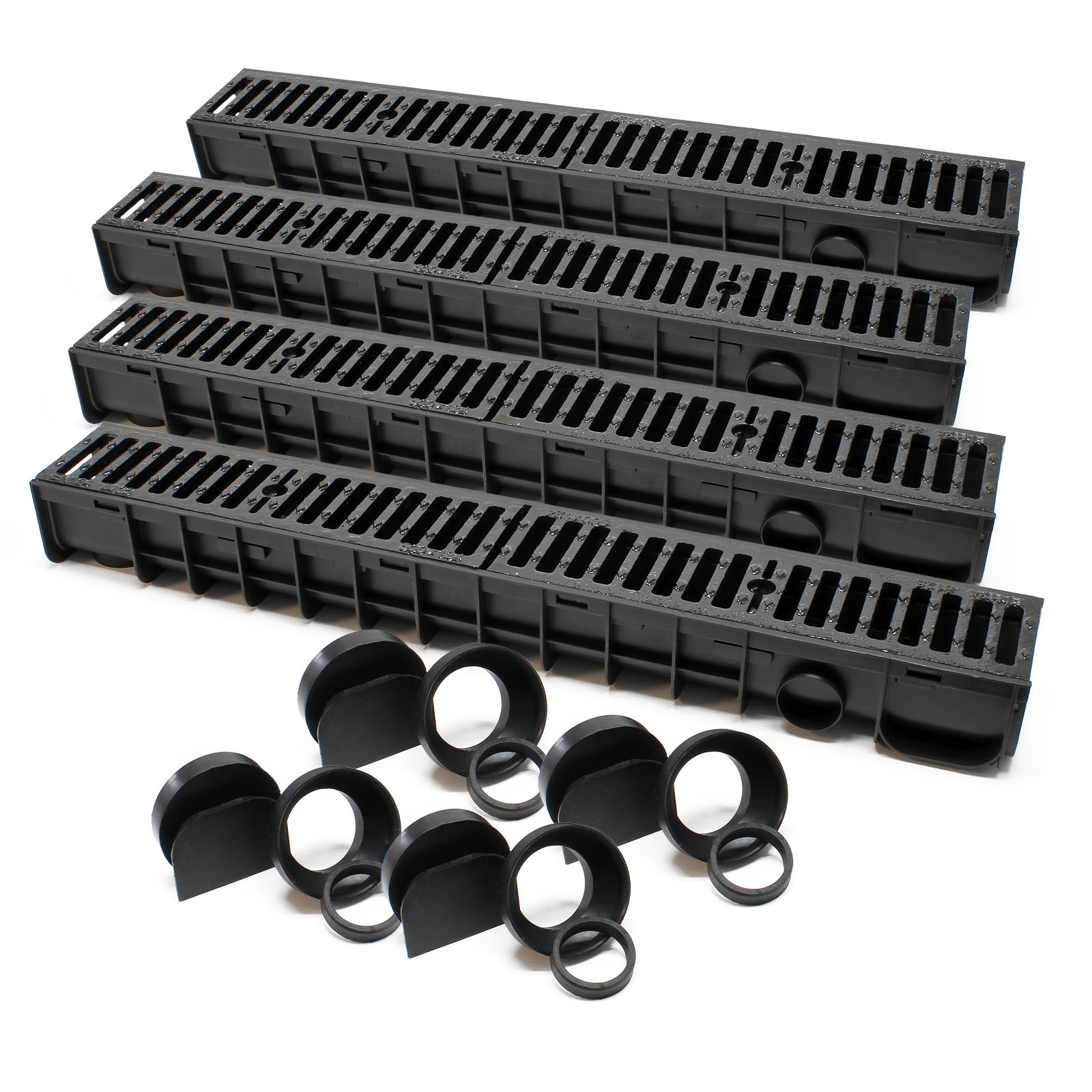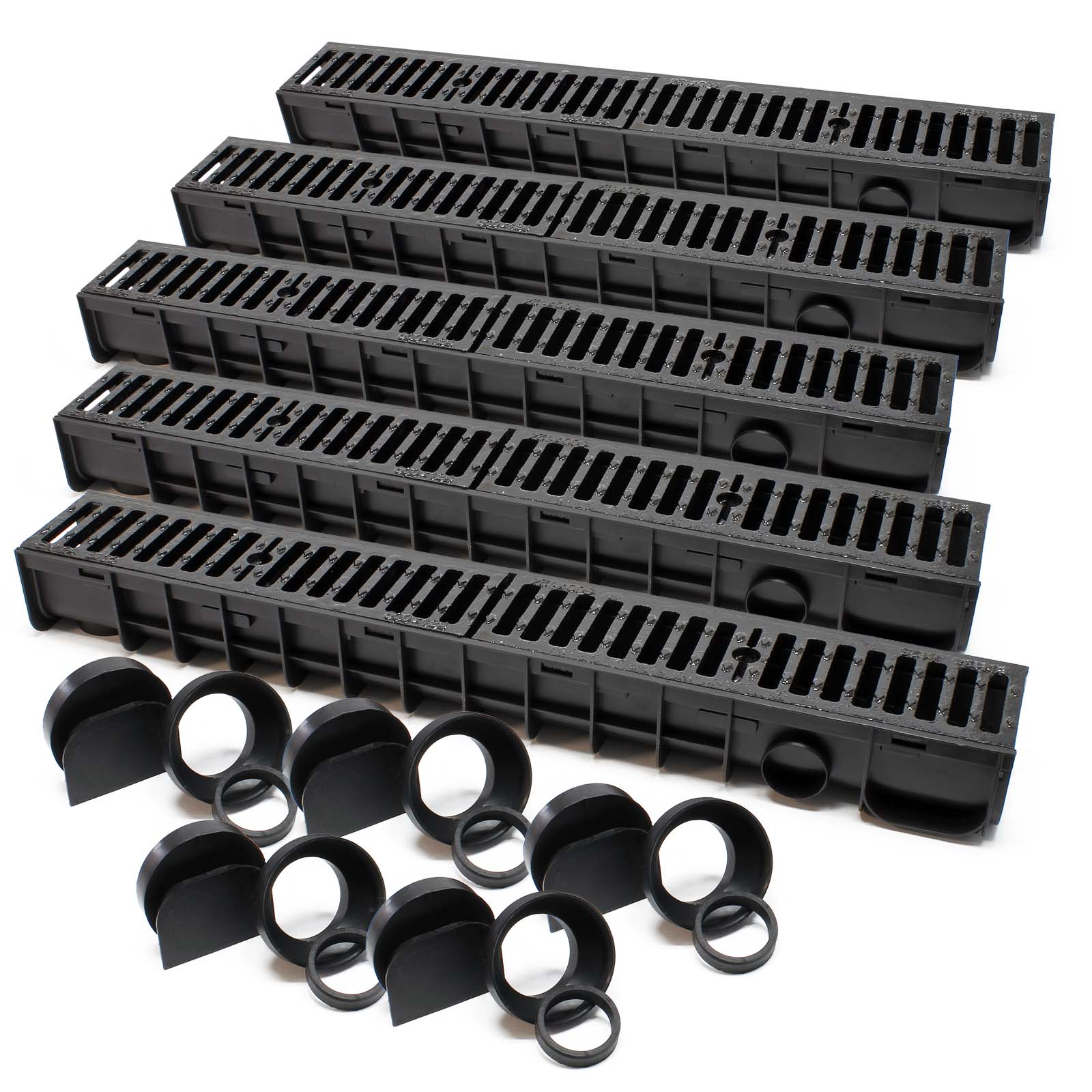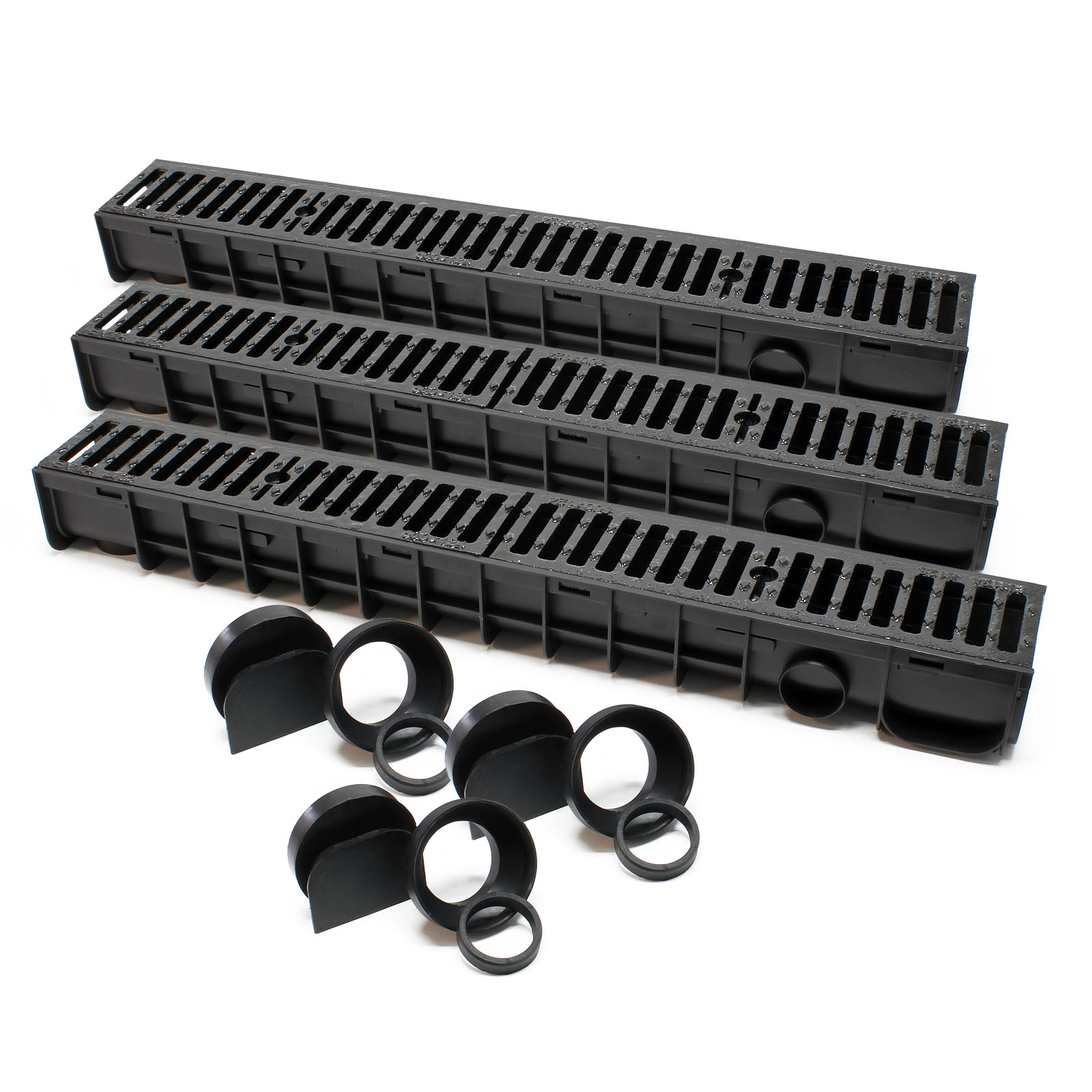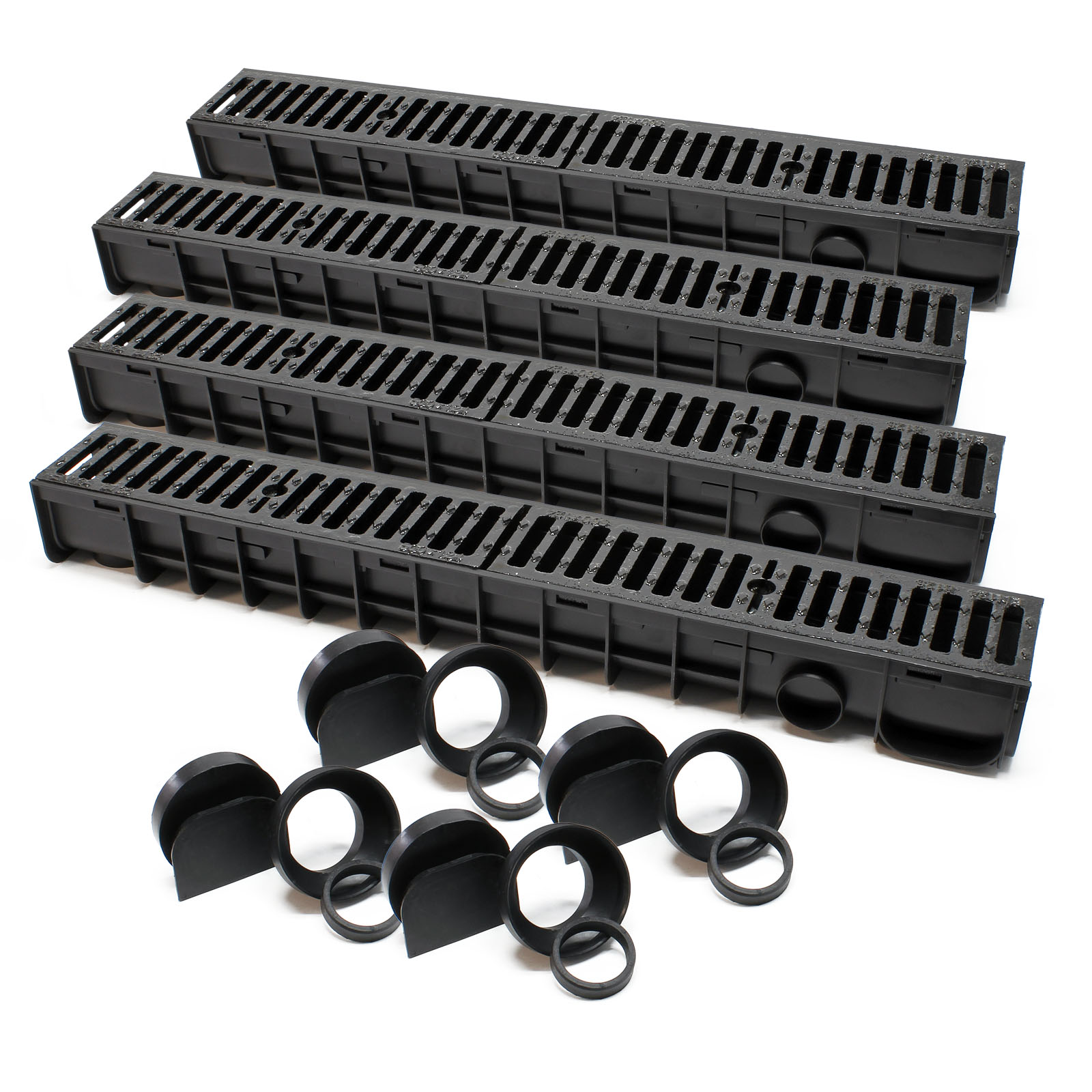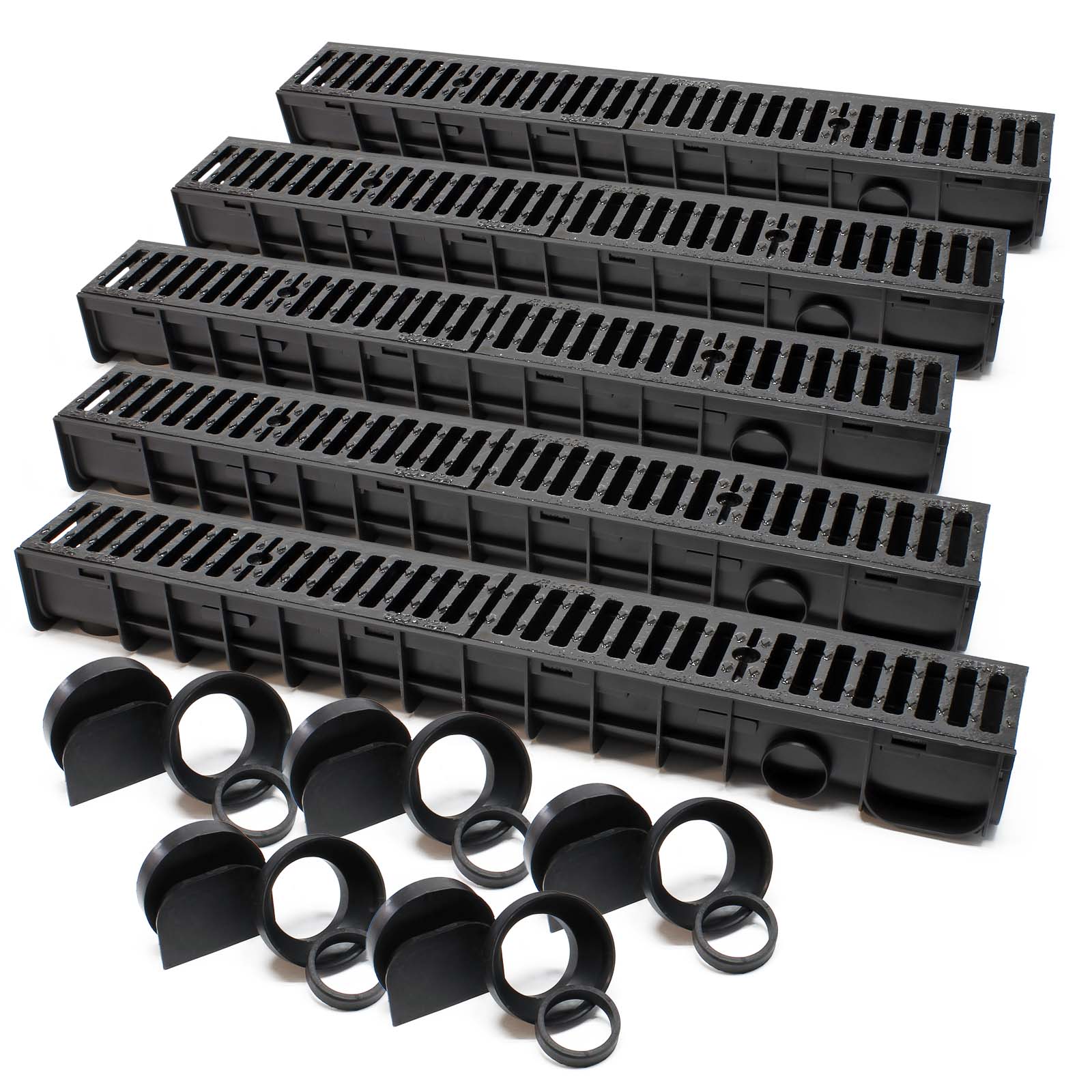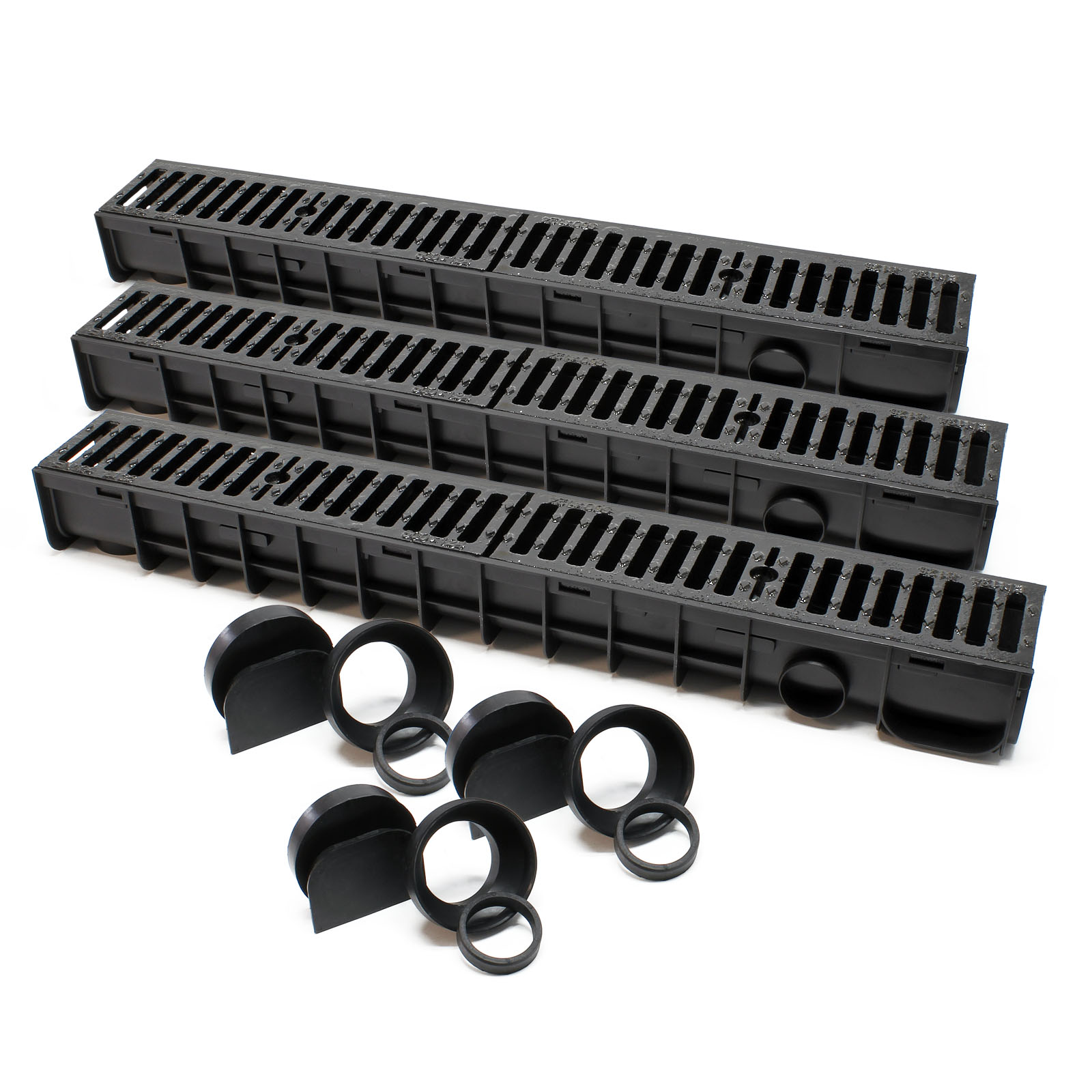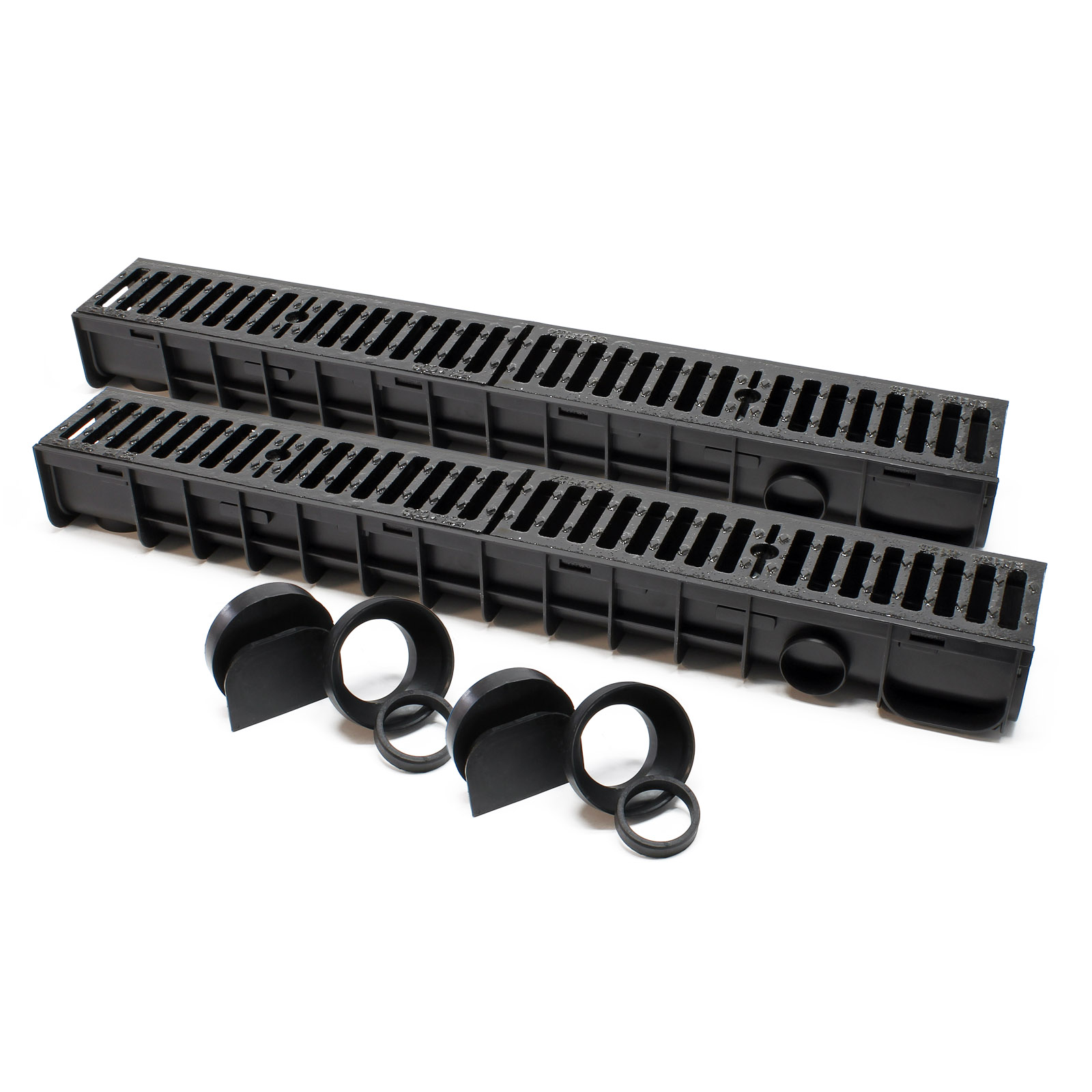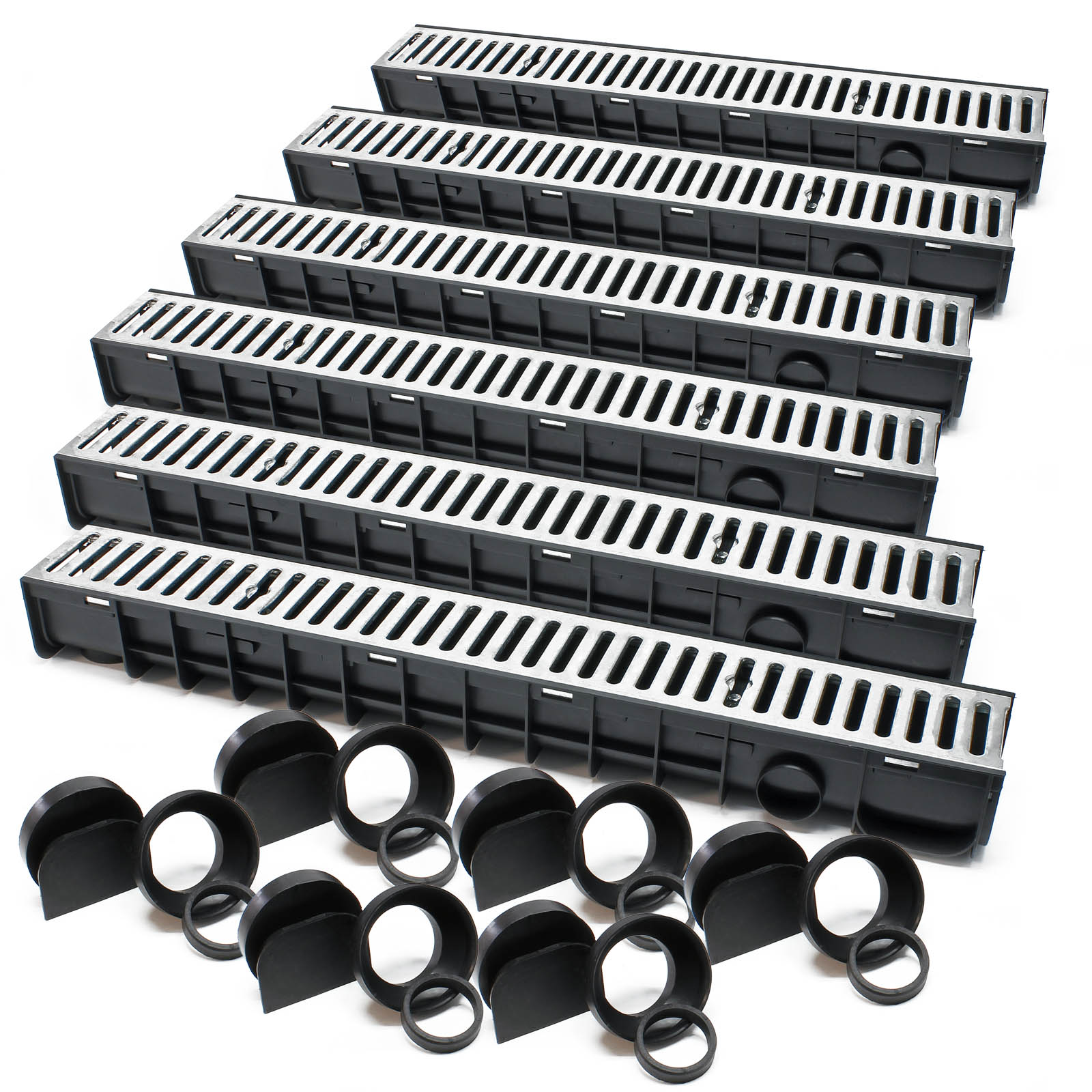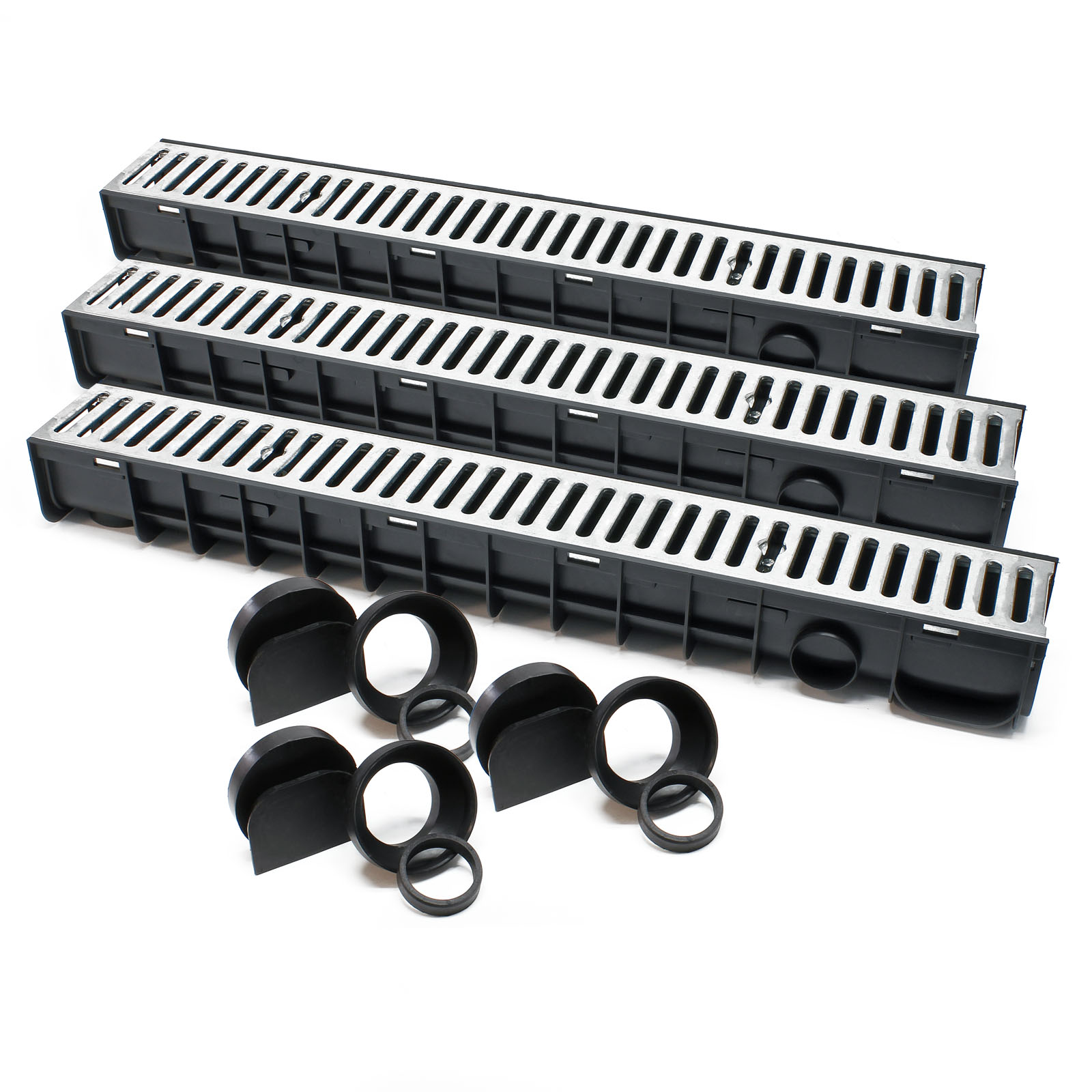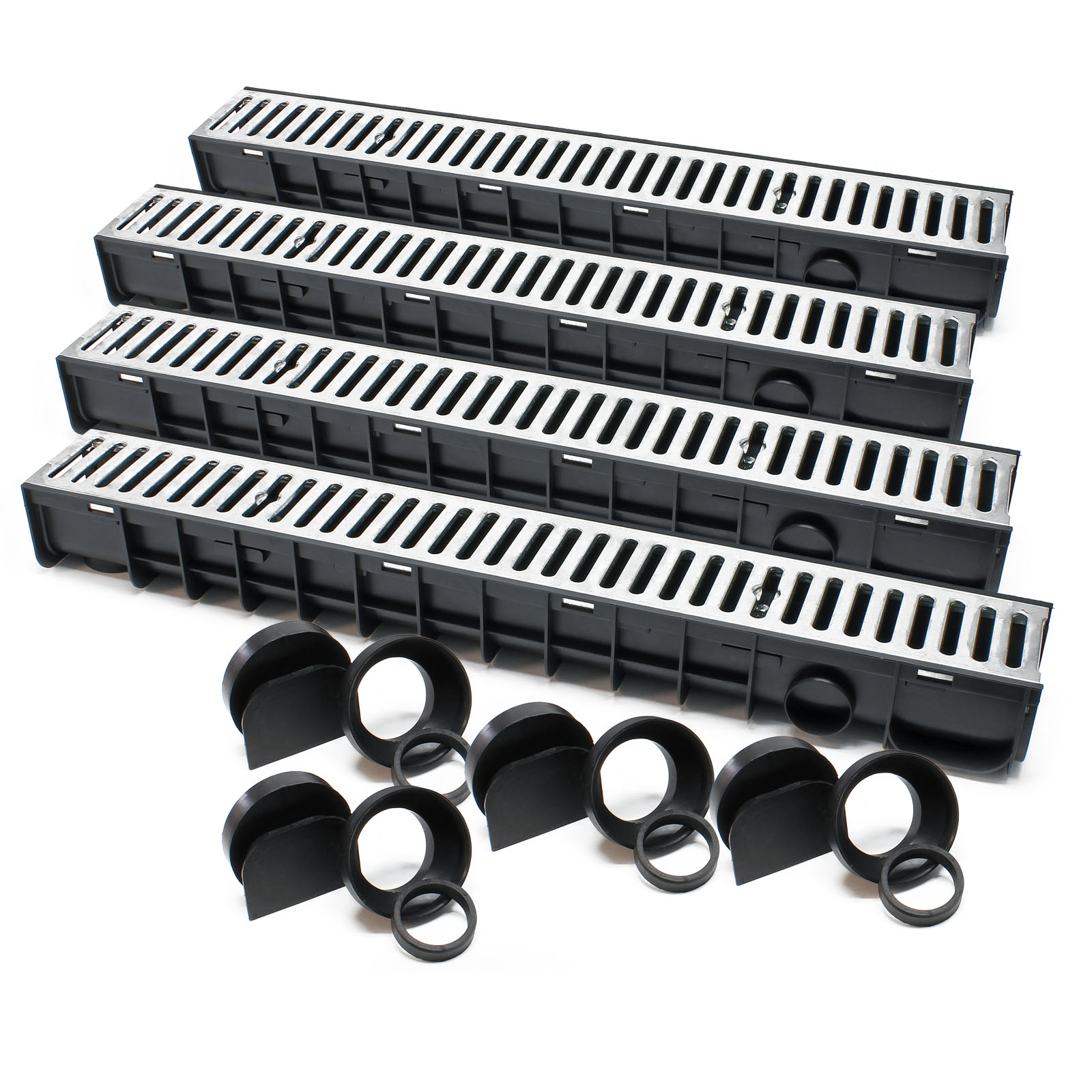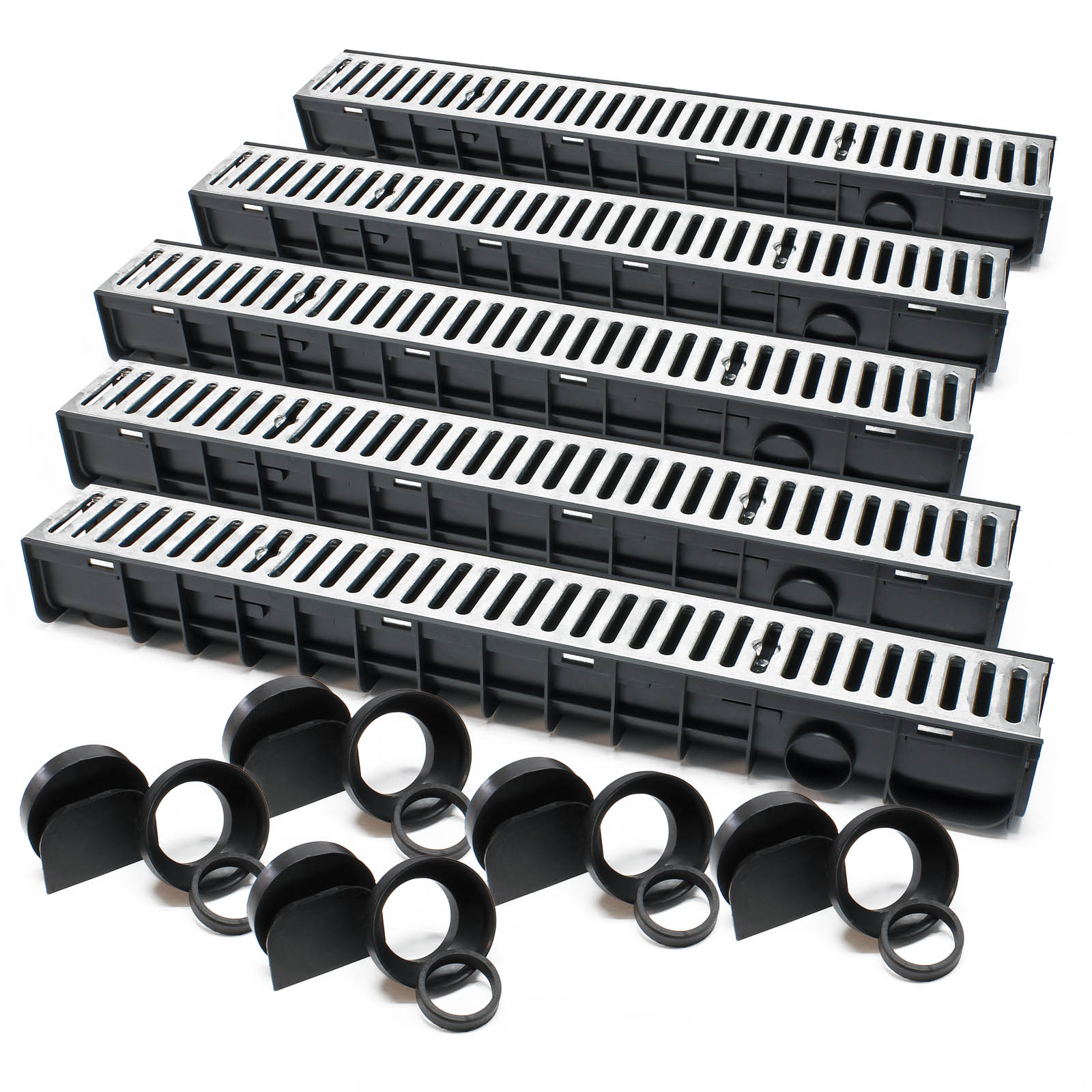Available, delivery time: 2 - 3 days
• Pipe connection standard KG / DN110
• Covering grid made of cast iron, channel made of polypropylene (PP)
• Max. weight up to 12.5 t
Available, delivery time: 2 - 3 days
• Pipe connection standard KG / DN110
• Covering grid made of cast iron
• Max. weight up to 25 t
Available, delivery time: 2 - 3 days
• Pipe connection standard KG / DN110
• Covering grid made of cast iron
• Max. weight up to 12.5 t
Content: 6 metre(s) (€40.00* / 1 metre(s))
Available, delivery time: 2 - 3 days
• Pipe connection standard KG / DN110
• Covering grid made of galvanised steel
• Max. weight up to 1.5 t
Available, delivery time: 2 - 3 days
• Pipe connection standard KG / DN110
• Covering grid made of cast iron
• Max. weight up to 25 t
Content: 6 metre(s) (€46.50* / 1 metre(s))
Available, delivery time: 2 - 3 days
• Pipe connection standard KG / DN110
• Covering grid made of cast iron
• Max. weight up to 12.5 t
Content: 4 metre(s) (€40.00* / 1 metre(s))
Available, delivery time: 2 - 3 days
• Pipe connection standard KG / DN110
• Covering grid made of cast iron
• Max. weight up to 12.5 t
Content: 5 metre(s) (€40.00* / 1 metre(s))
Available, delivery time: 2 - 3 days
• Pipe connection standard KG / DN110
• Covering grid made of cast iron
• Max. weight up to 12.5 t
Content: 3 metre(s) (€40.00* / 1 metre(s))
Available, delivery time: 2 - 3 days
• Pipe connection standard KG / DN110
• Covering grid made of cast iron
• Max. weight up to 25 t
Content: 4 metre(s) (€47.00* / 1 metre(s))
Available, delivery time: 2 - 3 days
• Pipe connection standard KG / DN110
• Covering grid made of cast iron
• Max. weight up to 25 t
Content: 5 metre(s) (€46.80* / 1 metre(s))
Available, delivery time: 2 - 3 days
• Pipe connection standard KG / DN110
• Covering grid made of cast iron
• Max. weight up to 25 t
Content: 3 metre(s) (€47.33* / 1 metre(s))
Available, delivery time: 2 - 3 days
• Pipe connection standard KG / DN110
• Covering grid made of cast iron
• Max. weight up to 12.5 t
Content: 2 metre(s) (€40.00* / 1 metre(s))
Available, delivery time: 2 - 3 days
• Pipe connection standard KG / DN110
• Covering grid made of galvanised steel
• Max. weight up to 1.5 t
Content: 6 metre(s) (€30.33* / 1 metre(s))
Available, delivery time: 2 - 3 days
• Pipe connection standard KG / DN110
• Covering grid made of galvanised steel
• Max. weight up to 1.5 t
Content: 3 metre(s) (€29.66* / 1 metre(s))
Available, delivery time: 2 - 3 days
• Pipe connection standard KG / DN110
• Covering grid made of galvanised steel
• Max. weight up to 1.5 t
Content: 4 metre(s) (€30.50* / 1 metre(s))
Available, delivery time: 2 - 3 days
• Pipe connection standard KG / DN110
• Covering grid made of cast iron
• Max. weight up to 25 t
Content: 2 metre(s) (€48.20* / 1 metre(s))
Available, delivery time: 2 - 3 days
• Pipe connection standard KG / DN110
• Covering grid made of galvanised steel
• Max. weight up to 1.5 t
Content: 2 metre(s) (€29.50* / 1 metre(s))
Available, delivery time: 2 - 3 days
• Pipe connection standard KG / DN110
• Covering grid made of galvanised steel
• Max. weight up to 1.5 t
Content: 5 metre(s) (€33.20* / 1 metre(s))
Entwässerungsrinnen in verschiedenen Längen
Sie suchen nach hochwertigen Entwässerungsrinnen, um Ihre Linienentwässerung im Außenbereich optimal zu gestalten? In unserem Sortiment finden Sie eine breite Auswahl an Ablaufrinnen und Bodenrinnen in verschiedenen Längen, die perfekt auf Ihre Bedürfnisse zugeschnitten sind. Ob für den Einsatz im Garten, auf der Terrasse oder im Hof – unsere Ablaufrinnen außen bieten Ihnen die ideale Lösung, um Regenwasser effizient abzuleiten und so Staunässe zu verhindern.
Unsere Entwässerungsrinnen zeichnen sich nicht nur durch ihre Funktionalität, sondern auch durch ihre Langlebigkeit und Robustheit aus. Sie sind aus hochwertigen Materialien gefertigt und halten den Belastungen im Außenbereich stand. Damit gewährleisten sie eine zuverlässige Linienentwässerung, die nicht nur praktisch, sondern auch ästhetisch ansprechend ist.
Egal, ob Sie eine Ablaufrinne für Ihren Garten oder eine Bodenrinne für Ihre Terrasse benötigen, wir bieten Ihnen verschiedene Längen und Modelle, um Ihren Anforderungen gerecht zu werden. Die einfache Installation und die wartungsarme Pflege machen unsere Entwässerungsrinnen zur ersten Wahl für alle, die eine effiziente und dauerhafte Lösung für die Ableitung von Regenwasser suchen.

Verschiedene Modelle für den Outdoor Bereich
Ob Sie eine schmale Entwässerungsrinne für Ihren Balkon oder eine flache Rinne für Ihre Terrasse benötigen, wir haben die richtigen Maße und Modelle, um Ihren individuellen Anforderungen gerecht zu werden.
Abgesehen von den unterschiedlichen Längen und Modellen bieten unsere Entwässerungsrinnen eine Reihe von Merkmalen, die sie besonders machen. Dazu gehören:
- Materialien: Unsere Rinnen sind aus hochwertigen Materialien gefertigt, die eine lange Lebensdauer und Beständigkeit gegen Witterungseinflüsse gewährleisten.
- Design: Wir bieten eine Auswahl an ästhetisch ansprechenden Rinnendesigns, die sich nahtlos in Ihre Außenbereiche integrieren lassen.
- Belastbarkeit: Unsere Produkte mit unterschiedlichen Belastungsklassen sind so konstruiert, dass sie den Belastungen im Outdoor-Bereich standhalten, sei es auf der Terrasse oder in der Einfahrt.
- Einfache Installation: Die Installation unserer Wasserablaufrinnen ist unkompliziert und erfordert keine aufwändigen Baumaßnahmen.
Unsere Entwässerungsrinnen eignen sich hervorragend für verschiedene Bereiche im Outdoor-Bereich, darunter:
Terrassen, Einfahrten, Balkone, Hofeinfahrten, Gartenwege, Poolbereiche & Garagenzufahrten.
Mit unseren hochwertigen Ablaufrinnen für Terrassen und anderen Outdoor-Flächen können Sie sicherstellen, dass Regenwasser effizient abgeleitet wird, um unerwünschte Staunässe und Schäden zu vermeiden.
Beschaffenheit und Eigenschaften
Die Beschaffenheit und Eigenschaften unserer Entwässerungsrinnen sind von entscheidender Bedeutung für eine effiziente Wasserabführung auf Terrassen und Höfen. Eine beliebte Wahl ist die verzinkte Variante, die Rostbildung verhindert und die Lebensdauer der Rinne verlängert.
Für diejenigen, die nach einer klassischen und robusten Option suchen, bieten wir Entwässerungsrinnen aus Gusseisen an. Diese gusseisernen Rinnen sind nicht nur besonders stabil, sondern verleihen Ihrem Außenbereich auch eine zeitlose Eleganz. Zusätzlich bieten wir Ihnen moderne, schwarze Rinnen, die nicht nur funktional sind, sondern auch eine zeitgemäße Ästhetik bieten. Sie verleihen Ihrem Projekt eine stilvolle Note.
Die Entwässerungsrinnen sind darauf ausgelegt, Rost und Frost zu widerstehen. Die verzinkten und gusseisernen Varianten sind besonders robust und bleiben auch bei widrigen Witterungsverhältnissen in erstklassigem Zustand.

Leichter Einbau und wartungsarm

Unsere Terrassenrinne und Ablaufrinne für den Außenbereich zeichnen sich nicht nur durch ihre hervorragenden Entwässerungseigenschaften aus, sondern auch durch ihre einfache Installation und wartungsarme Pflege.
Die Entwässerungsrinnen können unkompliziert eingebaut werden und es erfordert keine aufwändigen Baumaßnahmen. Sie können die Rinnen problemlos in Ihren Außenbereich integrieren, sei es auf der Terrasse, der Einfahrt oder im Garten. Der Einbau erfolgt in der Regel in wenigen Schritten. Zunächst wird eine Grube oder Rinne ausgehoben, in die die Terrassenrinne oder Ablaufrinne platziert wird. Anschließend erfolgt die sichere Fixierung, um ein stabiles und effizientes Entwässerungssystem zu gewährleisten. Unsere Produkte sind so konstruiert, dass sie sich leicht in Ihre vorhandene Umgebung integrieren lassen.
Die Pflege und Reinigung unserer Entwässerungsrinnen gestaltet sich äußerst einfach. Die schwarz beschichteten Varianten sind nicht nur ästhetisch ansprechend, sondern auch wartungsarm. Regelmäßiges Entfernen von Laub und Schmutz aus den Rinnen gewährleistet eine reibungslose Wasserabführung. Gelegentliches Spülen mit Wasser reicht aus, um Ablagerungen zu entfernen und die Funktionalität zu erhalten.
Zusammenfassung
In unserem Sortiment finden Sie eine Vielzahl von Abwasserrinnen, die perfekt auf Ihre Entwässerungsanforderungen abgestimmt sind. Ob Sie eine Fassadenrinne für die Terrasse oder eine flache Entwässerungsrinne mit Ablauf benötigen, wir bieten eine breite Auswahl. Unsere verschiedenen Ablaufrinnen sind in verschiedenen Längen und Modellen erhältlich, um sicherzustellen, dass Sie die passende Lösung für Ihr Projekt finden. Sie können zwischen verzinkten Varianten, die zusätzlichen Schutz vor Rost bieten, und robusten gusseisernen Rinnen wählen.
Die Belastbarkeit unserer Entwässerungsrinnen ist ausgelegt, den Anforderungen im Außenbereich standzuhalten. Egal, ob auf Ihrer Terrasse, in der Einfahrt oder im Garten – unsere Produkte sind darauf ausgerichtet Regenwasser effizient abzuleiten. Der Einbau unserer Abwasserrinnen ist unkompliziert und erfordert keine aufwändigen Baumaßnahmen. Die Pflege und Reinigung gestalten sich einfach, sodass Ihre Rinnen wartungsarm bleiben und jahrelang zuverlässig funktionieren.


